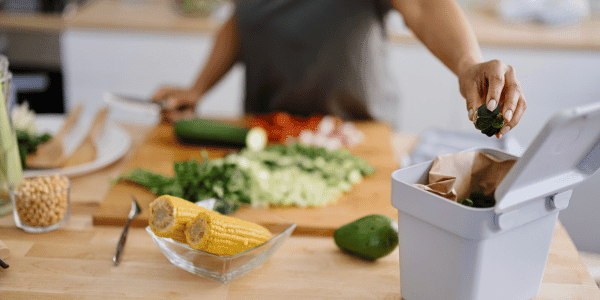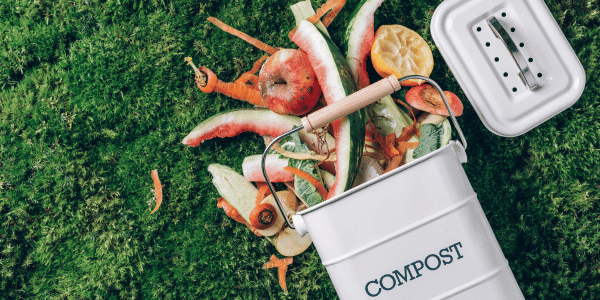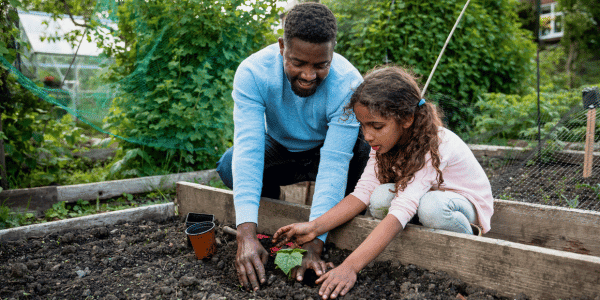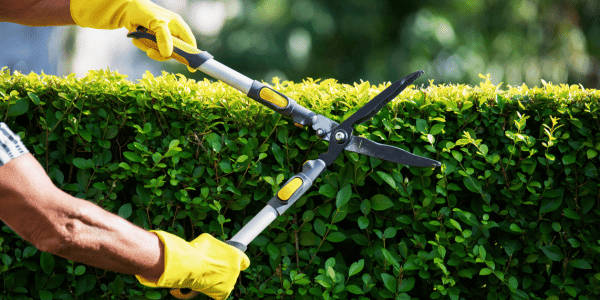The Ultimate Guide to Composting at Home

Composting is an effective, environmentally friendly, and easy way to repurpose organic materials, like food and yard scraps. An effort that requires little work to make a big impact, composting is something that almost anyone can do. Learn more about composting, including how to compost at home and how to use compost, right here. Let’s dig in.
What is Composting?
Composting is the process of recycling food and other organic waste. When these scraps are placed together in a compost bin, bugs and bacteria cause them to decompose into a dense, dark, soil-like matter, often nicknamed “black gold.” A valuable, nutrient-rich soil additive, black gold does it all—it increases soil water retention, prevents erosion, nurtures contaminated soil back to life, reduces the need for fertilizers and chemicals, and much more.
Besides producing a soil superfood and being the best growth stimulator for your plants and crops, there are several reasons to compost.
Benefits of Composting at Home
Composting at home is good for you and good for the planet. Did you know that food is the single most common material sent to landfills in the United States? Food makes up more than 24% of municipal solid waste. By composting, you:
- Lower your carbon footprint.
- Decrease personal food waste.
- Help cut down on landfill methane emissions, which improves air quality.
- Assist in saving space in landfills.

What to Compost and What Not to Compost
Almost any organic material can be composted, but it’s important to keep a close eye on what you compost. Some items can damage or infect your composting progress. Here’s a list of what you can compost and what you cannot compost.
What to Compost
- Cardboard
- Coffee grounds and natural fiber filters
- Eggshells
- Natural wood
- Fireplace ashes
- Fruit cores
- Fur and hair
- Grass clippings
- Hay and straw
- Houseplants
- Leaves
- Shredded newspaper
- Nutshells
- Uncoated paper bits
- Sawdust
- Tea leaves
- Vegetables
- Woodchips
- Pesticide-free yard trimmings
What Not to Compost
- Diseased or infected plants
- Meat and bones
- Charcoal ash
- Pet waste
- Fats and oils
- Weeds
- Cooking oil
- Construction paper
- Dairy products
- Bread
- Baked goods
- Large branches
- Dryer lint
Save the leaves! Learn Leaf-Raking Tips to Make Your Life Easier.
How to Compost at Home
Here’s the dirt on how to work a compost bin. The earth, your plants, and your trash can will thank you!
1. PICK A CONTAINER.
Dedicate an entire area of your yard to a compost pile if your community permits, or contain compost in a bucket or bin left outdoors in a sunny spot. An ideal compost container should be one cubic yard, or three feet by three feet, and have a tight-fitting lid with holes on the top and bottom for airflow and drainage.
2. ADD THE RIGHT INGREDIENTS.
When starting your pile or bin, lay down about four inches of soil. Add a layer of carbon-rich materials (known as “the browns,” or yard trimmings, woodchips, leaves, etc.), followed by a thin layer of nutrient-rich materials (also called “the greens,” or eggshells, tea leaves, fruits, vegetables, etc.). Always use a three-to-one ratio of brown to green matter. Lastly, top with another layer of brown material and add just enough water to moisten the contents, then mix it all up.
3. MAINTAIN.
Turn the mixture once a week with a shovel or another yard utensil to get oxygen moving. Add more soil and water to keep the matter from drying out, and put your scraps in as you get them, making sure to stick to the three-to-one ratio. It can take up to six months to get black gold. You’ll know it’s ready when the matter is dark, rich, crumbly, and smooth without any identifiable scraps.
How to Use Compost in Your Garden
Once your compost is ready, let it work its magic. Because soil can become dehydrated and erode, maintaining water within your soil is key to making your garden grow. Compost helps the soil retain moisture and conserve water. Plus, it increases the soil nutrient content, helps damaged soil come back to life, and boosts the soil’s productivity. To use compost in your garden:
- Add it to potting soil. Mix compost in with your potting soil twice a year to give it a boost and keep your potted plants healthy.
- Repurpose it as mulch. In the spring or fall, add about one to three inches of compost around trees or in your garden to act as mulch. Just like bark and straw mulch, compost is excellent at limiting weed growth.
- Mix it into garden beds. During growing season, spread about one to three inches of compost across your garden beds. Work it into the top four inches of soil by mixing with a shovel.
- Use it as lawn fertilizer. Sprinkle about a ¼-inch of compost across your lawn. It helps keep your lawn hydrated and happy.
Create a showstopping landscape. Check out the hottest garden and landscaping trends of the season.
Troubleshooting Common Composting Problems
Using the right materials and maintaining the pile are necessary to creating a good home compost. By keeping it moist, not soggy, and properly oxygenated, you’ll yield favorable results within a year. While it’s ok (even great!) for your compost pile to produce steam, it should not smell or attract pests. Here’s how to troubleshoot common composting problems.
Issue: Compost smells bad.
Solve: The pile is probably either too wet or not properly oxygenated. Try turning the pile thoroughly.
Issue: Compost pile is dry in the middle.
Solve: The pile likely needs more water. Moisten composting materials as you turn the pile.
Issue: Compost heap is damp in the middle, dry everywhere else.
Solve: You might need a bigger pile. Mix old materials with new composting materials.
Issue: The compost smells sweet.
Solve: The compost may be nitrogen deficient. Try adding a nitrogen source like fresh grass clippings.
What to Do With Tree Trimmings
Those who know how to compost at home may already be aware of what to compost and what not to compost. Reap all the benefits of composting, like reduced personal waste and reduced emissions, by composting things like tree leaves and finely chopped or shredded tree prunings. Don’t know how to trim trees properly? Check out “Tree Trimming 101: What to Do & What to Avoid” to learn more. Then, come back to this useful compost how-to guide for a refresher on how to use compost in your garden, lawn, and potting soil.

